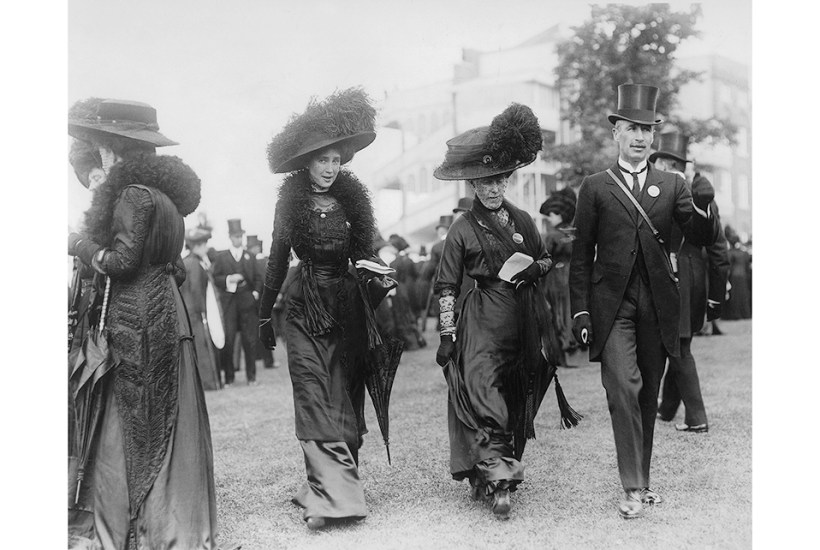This is a rather odd book and, I regret to say (given the reading that seems to have gone into it), not a very good one. If one had little knowledge of the reign of King Edward VII, or of the jokes, anecdotes and scandals of that period, then it might serve as a useful introduction to it. To anyone familiar with the history of the opening years of the past century, however, there is little to learn from a book dependent entirely on secondary sources, old newspapers and copies of Tatler. Martin Williams is clearly fascinated by the Belle Époque and has read much about it; but in avoiding archives and serious research, he has produced nothing that other scholars of the period did not already know, which gives his otherwise articulate book a stale flavour.
From its subtitle, I had expected a thoughtful examination of the social conventions of Edwardian Britain and its attitudes to monarchy and death before the Great War. What one gets instead is an account of the events surrounding the king’s death and how society conducted itself up to and after the funeral. Had the acknowledgements at the end been printed at the beginning, one might have adjusted any expectations: ‘The germ of this book lies in an Instagram post,’ Williams discloses, together with the fact that he had ‘long been casting around for a suitable subject for a full-length work of social history’. Happily one of his friends then
suggested that I might wish to explore the famous Black Ascot of 1910, which I had referenced in a caption [on Instagram] some weeks earlier… and within minutes it became clear that I had at last found an event around which I could weavea sustained and illuminating narrative.
It will be up to the reader to decide whether that narrative is so.
Certainly, much of it has nothing to do with the death of Edward VII or the rituals of mourning observed afterwards. Most of the first 125 pages are a familiar romp through the life of the monarch and his long-suffering wife (whom we are told lacked imagination: perhaps that was why she married him). We are taken round to meet the equally familiar family, starting with the Dear Old Queen, the King’s querulous mother, and then through the hapless Tsar and the status-obsessed Kaiser, about whom, again, there is apparently little new to say. We are reminded of the monarch’s interest in ladies who were not his wife, his joy in gallivanting off to France, and his motivation in assisting in the conclusion of the entente cordiale. But too much of this consists of statements of the obvious.
Williams notes that the long golden summer argument about Edwardian times is not entirely true: he describes the campaign by suffragettes, and the conflict over the People’s Budget of 1909 that led to the House of Lords defeating a financial measure for the first time since the reign of Queen Anne. It was also a period of massive industrial unrest, with the death of the king coinciding with the launch of more than a decade of strife over Irish Home Rule. Some of this is necessary background, but little attempt is made to synthesise it. The Edwardian age is indeed one of the great historical narratives of modern Britain, and Williams obviously feels at home there: but none of this alters the fact that many have trodden the ground before.
He seems attracted by the superficialities of the time, notably the fashions and the behaviour of high society, and comments on the architecture of the period, only to avoid going into any depth about it. There is a lot of what happens – relevant or not to the death of the king and the country’s reaction to it – but too little about what it meant. Williams coasts alongside his subject matter without seeming to get inside it, or to explain why – other than as an act of self-indulgence – he has chosen to write about it all. This is what gives the book its dilettante air. Perhaps some will contemplate reading it in an attempt to learn about what Samuel Hynes, a considerable student of the period, called the Edwardian turn of mind when it came to the question of death generally, or that of the monarch specifically. Frankly, I wouldn’t.
The most useful part of the book is the bibliography, listing a number of superior works on the period (though not, astonishingly, Hynes’s), which would offer readers a serious grounding in this crucial epoch. If anyone is hoping better to understand the impact of the death of our late queen, then they will at least be given a description of how the state in 1910 dealt with losing a much shorter-reigning sovereign – although a far better comparison would, for all her faults, have been Queen Victoria.
One can always tell when an author lacks extensive contextual knowledge of the subject he is writing about. Despite his consumption of printed sources, Williams, sadly, is one of those.
Got something to add? Join the discussion and comment below.
Get 10 issues for just $10
Subscribe to The Spectator Australia today for the next 10 magazine issues, plus full online access, for just $10.
You might disagree with half of it, but you’ll enjoy reading all of it. Try your first month for free, then just $2 a week for the remainder of your first year.








Comments
Don't miss out
Join the conversation with other Spectator Australia readers. Subscribe to leave a comment.
SUBSCRIBEAlready a subscriber? Log in